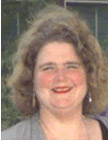(See Projects story on the Composite
Truck Box.)
Where are you from?
A suburb of Kansas City.
How did you become interested in chemistry?
I took it in high school and enjoyed it, but I didn't study it in college until my sophomore year. The University of Kansas had an excellent introductory chemistry professor who was famous throughout campus. I decided to become a chemist when someone asked him a question in class that he couldn't answer.
At that level in college, the teachers have all the answers. But all of a sudden, something needed to be done. People didn't know everything yet. I could find out things that nobody else knew.
Why did you move on to Penn State?
All undergraduate chemistry departments have a bulletin board outside their office with cards for graduate schools. After winnowing through all the information various schools sent me, I chose Rice and Case and Penn State. I decided I would rather live in the middle of nowhere at Penn State than in Cleveland or Houston.
How did you end up at R&D?
After grad school I went to Owens Corning Fiberglas in Ohio, to their research center. My husband was working there also. But Owens Corning is not a large enough company to manage the kind of basic research that they were trying to do. I became extremely frustrated and finally my husband suggested we make a change. It took us two years to both find new positions in the same location. GM Research Labs had an ad in the Chemical and Engineering News that seemed to describe just what I wanted to do. I sent in a resume, they called me, and I came.
What did you start working on?
Fiber-resin interface chemistry. I did surface chemistry on the fiber-wetting balance and looked at the attraction between different fiber surface chemistries and composite matrix resins.
What other projects have you worked on?
I've also done some basic adhesion work, looking at acid-base interactions and how they affect adhesion. I worked on nylon SRIM (structural reaction injection molding), hybrid composites of glass fibers and kevlar or carbon fibers, and preforming of glass and carbon fibers.
Were these for specific applications?
Not really. The truck box is the first project I've worked on that's actually gone into production. Until a few years ago, we didn't conduct a lot of production-oriented research.
Why was that?
Well, when I first came to R&D, I asked my boss what I should work on. He asked me what I wanted to work on. I said there were lots of things I'd like to do, then asked him what GM needed? He said, choose what you want to do and we'll do it.
It doesn't work that way any more, but whether or not that's good is open to debate. I think we're still reaping the benefits of people having the freedom to do research in the areas they wanted. On the other hand, it's also very exciting to work on a product that you can drive home.
How did you end up working on the composite truck box?
Actually, it was a fairly logical progression. If you look at fiber-matrix adhesion, it's fundamental to any kind of properties in a composite. It's the more microscopic view of what makes a composite work.
From there I went on to determine how to get the fibers into the composite for a preform. I first became involved with SRIM, because the nylon system that Stan Iobst was studying had fiber problems. They needed help in finding fibers that would not kill the catalysis of the nylon. Then I began working on other SRIM systems. I still tend to focus more on the preform end of the operation than the molding end.
Is that what you worked on for the composite pickup box?
Yes. The preform is more my area of expertise and interest.
Are you involved in the ACC?
Yes, but only since June 2001. The truck box work is winding down and it's time to move on.
How do you feel about the truck box?
It's exciting to drive home what you're working on. Plus I have two kids who are 16 and 17. When their friends ask, What do your folks do?, they like to point to the Silverado as an example of their Mom's work.
What are your other research interests?
Mostly composites. I'm doing work with ACC on preforming carbon fibers and I'd like to do a lot more in that area. The problem with carbon fibers is that the easiest-to-use forms are incredibly expensive. Trying to make the cheaper forms usable is a major challenge.
What's your work life like? Is there a typical day?
No. It would be very boring if there were. I think many researchers have an underlying goal of not being bored. With the pickup box, I was traveling a lot. In 2000, I spent much of my time in the plant where the box was made. And there I was … well … bored a lot. Much of the time I was just standing around watching the product being made, asking questions like What are they doing? How can we do it better? Then I'd bring back a bunch of data, sit down, and analyze it. That proved much more interesting.
Like everyone, I go to a lot of meetings. And I do a lot of computer analysis. I spend about half my time at my desk and half my time somewhere else. For example, this afternoon I'm going to visit a job shop about making preform screens for an Automotive Composite Consortium part.
What do you do when you're not working?
Juggle. I deal with whatever my family needs. I'm also active in my church, I quilt, I read, and I walk my dog.




